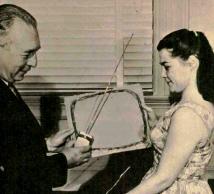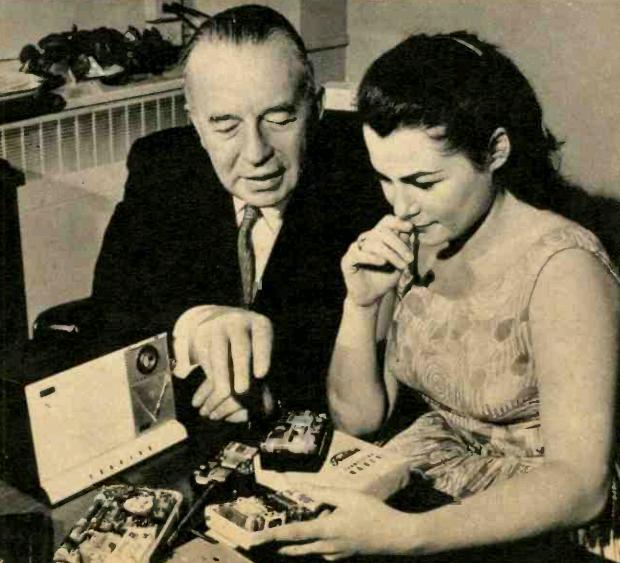Fifty-five years ago, Santa was getting ready to place a lot of transistor radios under trees, and radio engineer Richard Stollmack is shown above giving advice to one of Santa’s helpers on how to avoid getting taken by an unscrupulous retailer. Here, he took the back off a few high quality sets to show the consumer what one should look like: They were part packed, and obviously complex designs.
Stollmack first advised shopping at a store with a good reputation, where the dealer won’t misrepresent merchandise and will honor the warranty. He warned not to buy a radio with fewer than six transistors if you wanted worthwhile performance. Also, he stressed that you should look for a superheterodyne circuit, which would require a bare minimum of five transistors. Any doubt could be resolved by looking at the tuning condenser to see if it was a dual-gang unit. Any set with less than five transistors should be considered a toy or novelty, Stollmack warned. He advised that you should insist on having the salesman open up the back of the set and let you see the inner construction and compare it to a higher priced set. Shoddy construction or a paucity of parts would be a major warning.
 He also stressed the need to handle the radio and take it outside or close to a window. In this photo, he is showing a trick sometimes used by unscrupulous dealers to pass off cheap novelty sets as having better reception than they really offered. The set performs well when located near an induction coil, cleverly concealed under the counter, hooked to a longwire antenna. But when brought home, the set would be unlikely to get more than a couple of stations with loudspeaker volume.
He also stressed the need to handle the radio and take it outside or close to a window. In this photo, he is showing a trick sometimes used by unscrupulous dealers to pass off cheap novelty sets as having better reception than they really offered. The set performs well when located near an induction coil, cleverly concealed under the counter, hooked to a longwire antenna. But when brought home, the set would be unlikely to get more than a couple of stations with loudspeaker volume.
Stollmack shared these tips in the December 1960 issue of Electronics Illustrated.
Click Here For Today’s Ripley’s Believe It Or Not Cartoon
![]()

